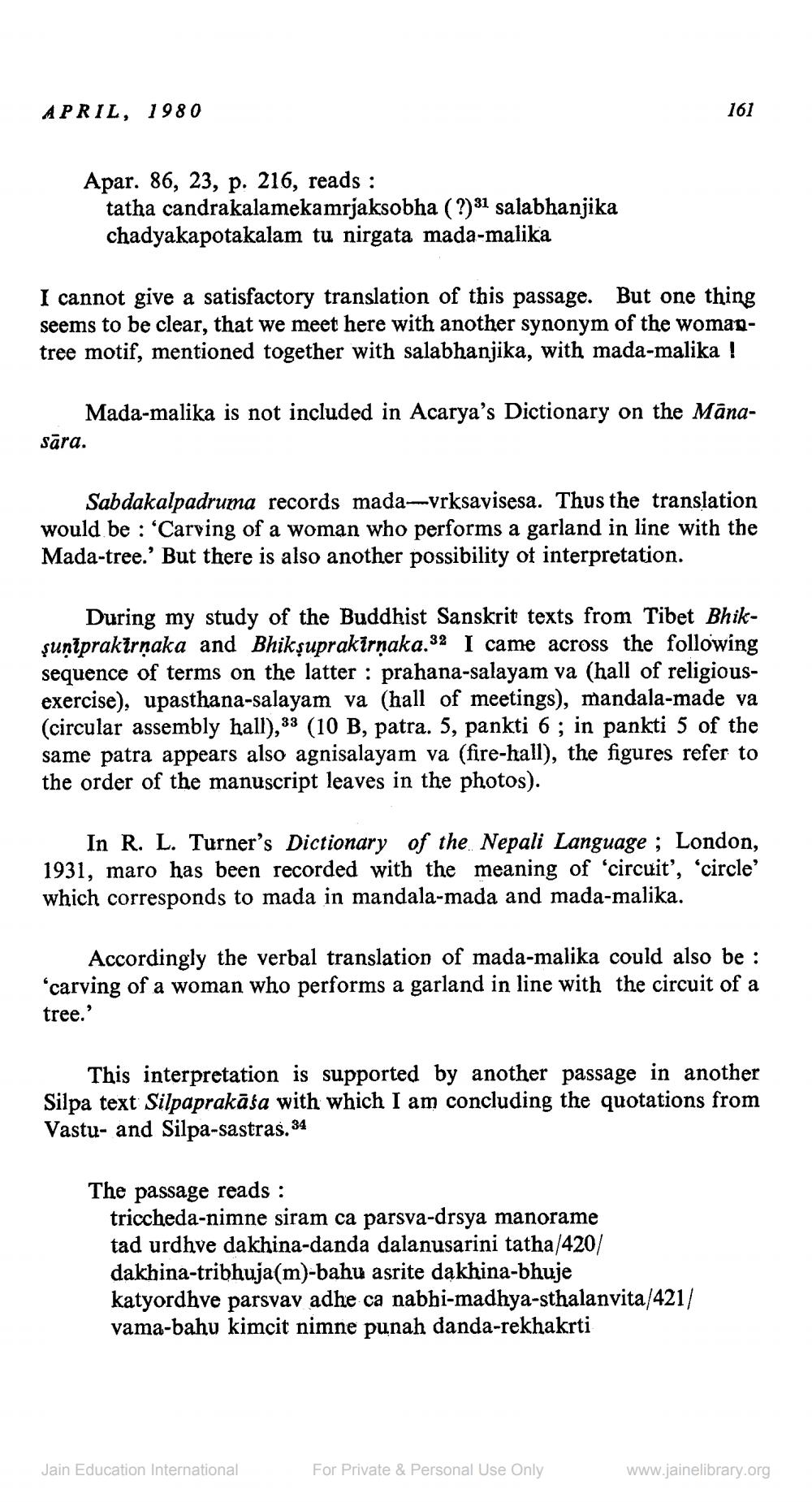________________
APRIL, 1980
Apar. 86, 23, p. 216, reads:
tatha candrakalamekamrjaksobha (?)31 salabhanjika chadyakapotakalam tu nirgata mada-malika
I cannot give a satisfactory translation of this passage. But one thing seems to be clear, that we meet here with another synonym of the womantree motif, mentioned together with salabhanjika, with mada-malika !
Mada-malika is not included in Acarya's Dictionary on the Mana
sära.
Sabdakalpadruma records mada-vrksavisesa. Thus the translation would be 'Carving of a woman who performs a garland in line with the Mada-tree.' But there is also another possibility of interpretation.
161
During my study of the Buddhist Sanskrit texts from Tibet Bhikşuniprakirṇaka and Bhikṣuprakirṇaka.32 I came across the following sequence of terms on the latter prahana-salayam va (hall of religiousexercise), upasthana-salayam va (hall of meetings), mandala-made va (circular assembly hall),33 (10 B, patra. 5, pankti 6; in pankti 5 of the same patra appears also agnisalayam va (fire-hall), the figures refer to the order of the manuscript leaves in the photos).
In R. L. Turner's Dictionary of the Nepali Language; London, 1931, maro has been recorded with the meaning of 'circuit', 'circle' which corresponds to mada in mandala-mada and mada-malika.
Accordingly the verbal translation of mada-malika could also be : 'carving of a woman who performs a garland in line with the circuit of a
tree.'
This interpretation is supported by another passage in another Silpa text Silpaprakasa with which I am concluding the quotations from Vastu- and Silpa-sastras. 34
The passage reads:
triccheda-nimne siram ca parsva-drsya manorame tad urdhve dakhina-danda dalanusarini tatha/420/ dakhina-tribhuja(m)-bahu asrite dakhina-bhuje katyordhve parsvav adhe ca nabhi-madhya-sthalanvita/421/ vama-bahu kimcit nimne punah danda-rekhakrti
Jain Education International
For Private & Personal Use Only
www.jainelibrary.org




